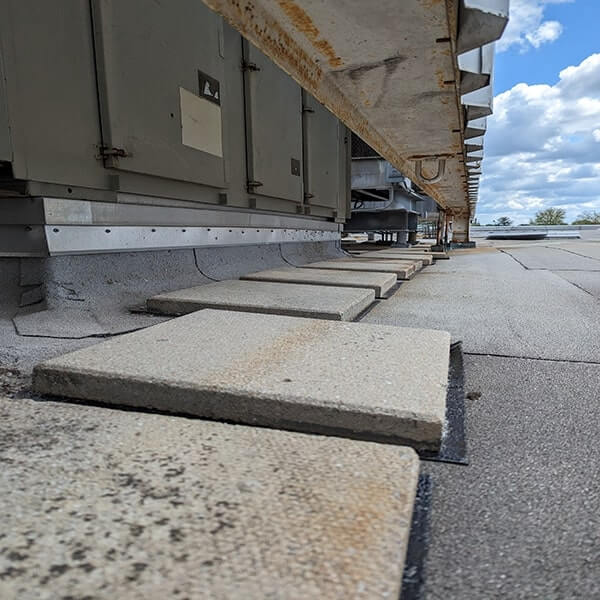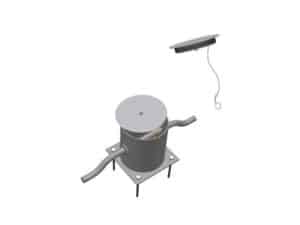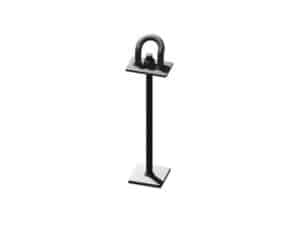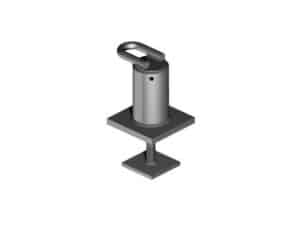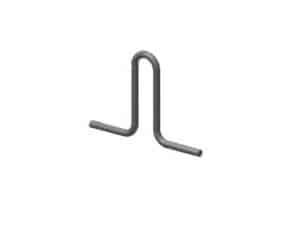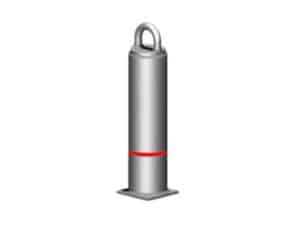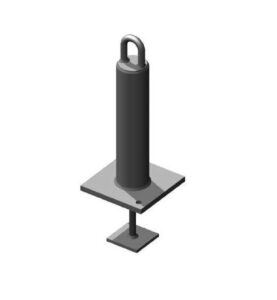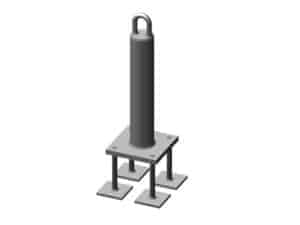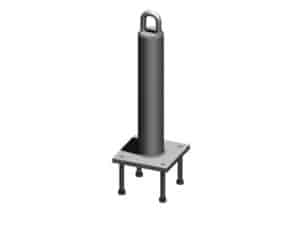Whether it is new construction or retrofit, there is always a way to install window washing, suspended maintenance, and fall protection equipment. While equipment can be installed on structural steel or wood structures, the easiest structure to work with is reinforced concrete. It is the most cost effective and does not typically require access to the underside or localized reinforcing. It has other benefits, such as improved insulation and sound barrier qualities.
Advantages of Reinforced Concrete:
Cost-effective
Improved insulation
Sound barrier qualities
Roof Anchor Installation
The best part of the new construction phase is that we do not have to send anyone to the site for installation (which saves everyone money, time, and other resources). If the job only needs permanent roof anchors, we simply send the equipment to the site (with our shop drawings) and cast it into the concrete.
Types of Cast-In Roof Anchors:
- single stud
- four studs
- fully embedded
Single Stud Roof Anchor
A single stud roof anchor is the most physically difficult to place (for casting in) as there is only one bolt to balance the anchor.
Four Stud Roof Anchor
A four-stud roof anchor is much easier to place when casting in. As you can imagine, there are more studs (or bolts) to stand the anchor on. Engineering requires these extra studs (specifically for taller anchors).
Fully Embedded Roof Anchor
A fully embedded roof anchor is the easiest to cast in because of its flat bottom. Also, it is the most cost-effective because it is all pier (instead of having stud(s) on the bottom).
What if Pours Are Missed?
In the unfortunate event that a pour is missed by either the installer or roofer, the anchors must be retrofitted. Still, this isn’t the end of the world! Concrete is the most straightforward structure to redo due to its flexibility, and the project should be able to carry on in a timely manner.
Retrofitting Anchors:
1. Adhesive Roof Anchor
An adhesive roof anchor is glued into place with epoxy. This type of anchor requires load testing once every five years, though (which is an extra service). Book an inspection today to ensure your anchors are up to standard."
2. Bolt Through Roof Anchor
A bolt-through roof anchor is another solution for a preexisting structure that must be retrofitted. This type of anchor does require access to the underside of the concrete, though, and it leaves components (base plate, bolt, nut) exposed.
3. Cast in Place Anchors
Using tie-back anchors to secure workers during maintenance or window washing, ensures compliance with safety standards and provides a secure attachment point.
Overall, rooftop fall protection systems are essential for ensuring the safety of workers performing tasks at height. By utilizing roof safety equipment such as permanent roof anchors, horizontal lifelines, vertical lifelines, and harnesses, you can create a safe workplace for your employees.
In conclusion, selecting the appropriate safety equipment and rooftop fall protection systems is crucial for any construction or maintenance project. Reinforced concrete provides a reliable and cost-effective base for installing roof anchors. Prioritizing safety with the right equipment ensures compliance with regulations and protects your workforce.
Share this Post

